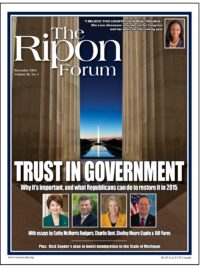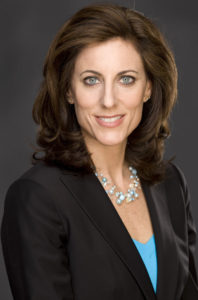In February 2007, Gallup’s survey showed, “Democrat Hillary Rodham Clinton and Republican Rudy Giuliani widening their leads in national support for their party’s respective presidential nominations…both are now at their high point in support since last year’s midterm elections — the unofficial kickoff for the 2008 campaign.”
Clinton had a 19 percentage point lead over her nearest competitor, then-Senator Barack Obama (40 percent to 21 percent). Giuliani had a 16 percentage point lead over his nearest competitor, Senator John McCain (40 percent to 24 percent).
On hearing the news, Washington’s political pundits seemed delighted: “Imagine — an all New York presidential race! It would be historic!” (No, Thomas Dewey took on Franklin Roosevelt in 1944.) In short, speculation abounded.
But when votes replaced opinions, Obama and McCain had each won his party’s 2008 nomination.
What should we glean from this?
Frontrunners don’t always win, but presidential nomination contests are rarely wide-open races. Dark horses don’t emerge from the back of the pack. The 2008 winners were in second place in their respective party’s poll.
Said another way, nomination winners typically arise from the handful of viable candidates at the outset of the race. Whether the winner had been the frontrunner or another aspirant in the top-tier largely depends on three contextual variables: structure, unity, and the competition.
Nomination winners typically arise from the handful of viable candidates at the outset of the race. Whether the winner had been the frontrunner or another aspirant in the top-tier largely depends on three contextual variables: structure, unity, and the competition.
Structure refers to whether it is an open-seat contest, or includes an incumbent or “heir apparent” (i.e., a sitting vice president). It also refers to whether the party is “in” or “out” of the White House. Generally speaking, if there’s no incumbent running, it’s better to be the “out” party because since 1952, only George H.W. Bush has managed to win his party a third term in the Oval Office.
Whether or not a party is unified is difficult to ascertain. Both parties contain many factions and it seems that on most days, there’s a report of a “civil war” breaking out within one of them.
Perhaps unsurprisingly, unity is easiest when the party holds the White House and the incumbent president is running for re-nomination. Since the start of the modern nomination system in 1972, only two incumbents have faced serious intra-party competition: Jimmy Carter by Ted Kennedy in 1980 and George H.W. Bush by Pat Buchanan in 1992. Even though Buchanan did not win a single contest, scholars view his challenge as being emblematic of an ideologically divided party.
Structure and unity are related to the third variable: the competition. As a rule, open-seat elections spur nomination races with several credible aspirants. And when an “out” party is divided, the number of viable candidates and the competitiveness of the contest tends to grow.
That was the position of the Democrats in 2008. It is also the position of the Republicans in 2016.
Aside from Clinton and Obama, the 2008 Democratic nomination race included in its top tier former vice presidential nominee John Edwards, New Mexico governor Bill Richardson, and Senators Joe Biden and Chris Dodd. Not an amateurish crowd. That Obama bested them also raises the fact that uncertainty often increases with competition. Similarly, former Georgia governor Jimmy Carter upset an even-more qualified field in 1976.
The key to 2008 (and 1976): Iowa and the momentum that Obama’s unexpected win produced. It sparked his party to unite around his candidacy. In sum, dark horses need bright lights to be seen.
As a rule, open-seat elections spur nomination races with several credible aspirants. And when an “out” party is divided, the number of viable candidates and the competitiveness of the contest tends to grow.
Looking to 2016, the Republicans have numerous credible potential aspirants, from Senators Rand Paul and Ted Cruz to Governors Scott Walker and Chris Christie to former governors Rick Perry and Jeb Bush, naming only a few. With this much competition across what is considered a divided party, the aspirant most likely to secure the nomination will be the one with an early win.
Observers should watch Iowa and New Hampshire closely, and trust that whoever “skips” these contests, isn’t really running (e.g., Giuliani).
As for the Democrats, Clinton appears to be an heir apparent. While the sitting president has not bequeathed this unofficial title to her with an endorsement, she seems fine without it. Her minimal competition (Bernie Sanders, Jim Webb, and Martin O’Malley) resembles the weak effort made by Senator Bill Bradley against Vice President Al Gore in 2000.
Since the 2014 midterm elections, however, the unity of the Democratic coalition has been fraying. Were a substantive progressive candidate (e.g., Senator Elizabeth Warren or even Howard Dean) to leap into the race, it’s possible that Clinton would experience a 2008 flashback. Still, that dark horse candidate would have to win in Iowa to have any chance of staving off Clinton’s likely momentum.
Could it be done? Yes. Is it likely? No.
Taken together, Clinton seems more likely to follow McCain’s jagged path, then her own from 2008. Frontrunners and top tier aspirants win presidential nomination races. Don’t place a bet on any dark horse too far down the list.
Lara M. Brown, Ph.D., is an Associate Professor at The Graduate School of Political Management at George Washington University.





